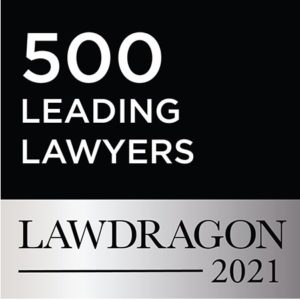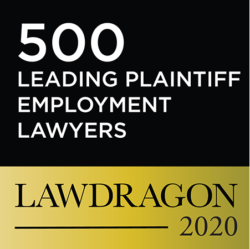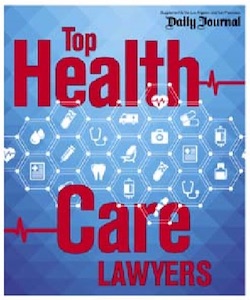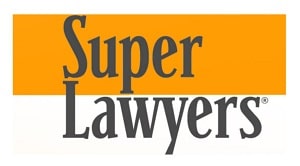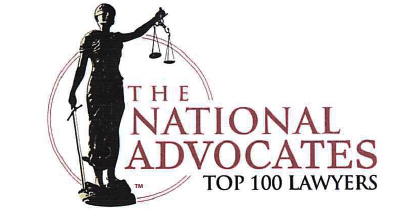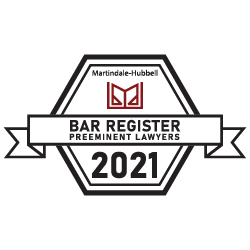Statistically speaking, you’re probably experiencing back or neck pain as you read this. Back pain is not only the most common disabling condition in the United States, but it’s also the most common disabling condition in the world. The American Chiropractic Association reports that nearly half of all working Americans experience back pain each year, and even more experience neck pain.
Back pain costs American workers an estimated $50 billion in lost income and decreased productivity each year, it also accounts for about 264 million lost workdays. Herniated or bulging discs are one of the leading causes of back pain and often require surgery to correct.
Lower back pain accounts for more disabilities than mid-back pain, and disabling conditions arising from back pain are also commonly linked to the opioid crisis. Lower back pain is the most common condition treating doctors prescribe prescription painkillers, which unfortunately can lead to serious opioid abuse and addiction. What started as a herniated disc can quickly develop into a serious chronic condition and addiction.
Back pain is so common that some individual and group long-term disability insurers actually severely limit back pain claimants from receiving long-term benefits.
America’s top-rated long-term disability attorneys and award-winning ERISA lawyers at DarrasLaw evaluate thousands of disabling herniated disc cases each year. Our founding partner, Frank N. Darras, and his firms have recovered almost $1 billion in wrongfully delayed, denied, and terminated insurance benefits for our clients. To see if DarrasLaw can help you, schedule your free disability policy analysis and free claim consultation today at 800-898-7299 or contact us online.
Common Causes of Back Pain
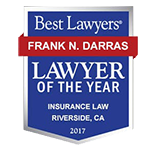 All back pain is different. Your back bears your body weight. With time, this causes your vertebrae, intervertebral discs, back muscles, and tendons to deteriorate quicker than the rest of your body. Statistics indicate that nearly 80 percent of people experience back pain at some point in their lives. It often occurs as your back strains with age, but back pain can also occur due to:
All back pain is different. Your back bears your body weight. With time, this causes your vertebrae, intervertebral discs, back muscles, and tendons to deteriorate quicker than the rest of your body. Statistics indicate that nearly 80 percent of people experience back pain at some point in their lives. It often occurs as your back strains with age, but back pain can also occur due to:
- Ligament strains and sprains
- Herniated discs
- Bulging discs
- Nerve root compression/nerve pain
- Arthritis and joint irritation
- Sciatica
- Obesity
- Poor posture/excessive computer work
- Lack of exercise
- Cancer
- Rheumatoid arthritis
- Kidney infections
- Kidney stones
- Blood clots
- Psychological stress
- Genetic disorders such as Spina Bifida
- Trauma
- Bone loss
Claimants with disability policy exclusions for back pain may claim individual or group disability benefits for an underlying condition that manifests in back pain. An autoimmune disorder that’s causing the disabling back pain may qualify you for additional individual or group disability benefits.
Herniated discs are among the most common causes of both disabling back pain and wrongful denials of individual or group long-term disability benefits. Proving that your herniation was not an age-related mild problem is essential to claiming extended individual or group long-term disability benefits.
Understanding Spinal Structure
Most back pain, including pain from a ruptured disc, originates in or around your spine. Your spine consists of 33 round bones called vertebrae stacked on top of one another. Between each vertebra is something called an intervertebral disc. These gelatinous formations act as both shock absorbers and padding for your vertebrae. Without them, your bones would knock and grind together, causing extreme pain, inflammation, and arthritis.
Your spine consists of three major sections and one minor section:
- Cervical spine (neck): Your cervical spine, or C-spine, consists of seven vertebrae extending from the base of your skull to your shoulders. Your C-spine holds the weight of your head and acts as the doorway for your spinal cord.
- Thoracic spine: This is the largest portion of your spine and consists of 12 vertebrae. Your thoracic spine extends from your shoulders to your mid-section and supports your rib cage, which protects your heart and lungs. An injury to your thoracic spine or surrounding muscles usually causes upper back pain. Poor posture often results in thoracic spine strains and pain.
- Lumbar spine: Your lumbar spine consists of five large vertebrae extending from your rib cage to the top of your buttocks. Lower back pain is actually lumbar spine pain. The vertebrae in your lower back are larger because your lumbar spine bears the majority of your body weight. It’s often the first area of your back to break down with age.
- Sacral spine: There is one small disc in your sacral spine, which consists of five vertebrae known as your tailbone. This part of your spine extends from the top to mid-section of your buttock.
Each vertebra in your spine has a butterfly-like bony protrusion containing your spinal cord. Your spinal cord is not your spine, though people often confuse them. Your spinal cord consists of nerves and nerve fibers extending from your brain stem to your sciatic nerve at the base of your sacral spine, which is the largest nerve in your body. Your spinal cord sends signals from the brain to your body, and any damage to your spinal cord can result in paralysis.
Intervertebral Disc Displacement
Physiologists often describe your intervertebral discs as donuts. They consist of a hard outer layer of cartilage that contains the softer jelly-like substance that acts as shock absorbent padding for your body. The outer layer is called the annulus fibrosus, and the softer center is called the nucleus pulposus.
As you move, your spine moves with you. Your discs flex and rub against your spine, which means they narrow as you age. Gravity also takes its toll. Sometimes, your discs will compress and bulge evenly around your vertebrae, which is a common type of age-related degeneration. Discs can also bulge due to trauma. A blow to the back, serious strain, or car accident can cause painful and traumatic disc displacement.
The weaker your discs become, the more likely they’ll move out of place. A rear-end car accident at age 21 may result in a muscle strain while the same accident at age 55 may result in multiple disc herniations.
There is a difference between a bulging disc and a herniated disc, though they often occur together. Herniated discs are also commonly referred to as ruptured discs. A herniation means the soft center of the disc has broken through the cartilage containing it, like jelly spilling from a donut. Bulging and herniated discs do not always heal naturally. You might manage the pain associated with normal, age-related degeneration, but surgery is often necessary to treat serious herniations.
Signs and Symptoms of Herniated Discs
The signs and symptoms of herniated discs depend on the area of herniation. Lumbar spine herniations often irritate your sciatic nerve, while cervical spine herniations may cause numbness in your shoulders and fingers. Your symptoms typically manifest at or below the area of herniation. Herniations cause more than pain and discomfort.
Displaced discs often press against your nerve roots or cause swelling that compresses your spinal cord. You may experience pain, swelling, and joint discomfort, as well as symptoms of nerve damage such as tingling and numbness. The following symptoms often result from cervical spine (neck) herniations:
- Radiating numbness in your shoulders and arms
- Tingling in your shoulders and arms radiating to your fingers
- Weakness in your hands and arms
- Pain
- Loss of balance and coordination
- Difficulty turning your neck
- Clumsiness in your hands
- Loss of fine motor skills
Symptoms in your neck, arms, hands, shoulders, and fingers can commonly occur with cervical herniations.
Thoracic (upper back) herniations typically result in radiating pain to the chest or stomach, numbness, difficulty balancing, and upper back pain, as well as certain symptoms also associated with lumbar spine herniations. Lumbar spine herniations result in extreme sciatic nerve pain and discomfort. These symptoms include:
- Sciatica
- Leg pain down the back of your leg that is often worse than your back pain
- Sharp, piercing, and burning pain in your legs
- Pain in your feet, calves, thighs, buttocks, and toes
- Pins-and-needles sensations and weakness in your lower extremities
- Difficulty lifting your feet and walking
- Lower back pain that’s worse with movement
Herniated discs in the lower back are the leading cause of sciatic and associated nerve pain.
Your symptoms may also denote the type of herniation you have. A central disc protrusion (forward herniation) puts pressure directly on the spinal cord, causing excessive nerve symptoms and potential paralysis. Lateral disc herniations (left and right herniations) may cause nerve root symptoms but put less pressure on your spinal cord.
Common Causes of Disc Herniations
Three main causes of disc herniations are trauma, degeneration, and a combination thereof. Most individual and group long-term disability insurers believe normal age-related degeneration does not cause disability. Degenerative disc herniations often occur in the following stages:
- Stage 1: As you age, your discs start to dry out due to chemical changes in your body, making them more brittle and less able to absorb shock.
- Stage 2: Your disc will start to move beyond your spinal column and may begin to bulge and press on your nerves.
- Stage 3: The gel begins to break through the wall of the disc but remains contained.
- Stage 4: Full herniation. The gel finally breaks through the disc and moves outside the disc into your spinal column. This is not only painful, but it may also compress your nerves and affect everything from walking to bladder function.
The drier, weaker, and harder your discs become as you age, the easier it is to injure them. The following traumatic injuries, however, may cause disc herniations even in the young and healthy:
- Car accidents
- Falls
- Extreme sports accidents
- Blows to the back
- Spinal fractures
The majority of disc herniations result from a combination of age and trauma. The harder your discs, the less shock they can absorb without breaking. Sometimes your discs are so brittle that bending down to pick up a child or a hairbrush may cause a protrusion. A serious car accident may cause multiple herniations in older people and painful traumatic herniations in younger workers.
Claiming Individual and Group Long-Term Disability Benefits for Disc Herniations
 Insurance is a business. Your individual or group long-term disability insurer is a for-profit corporation that performs a risk-benefit analysis before offering disability benefits. Back injuries are so common that some insurers underwrite policies that severely limit the coverage for back pain.
Insurance is a business. Your individual or group long-term disability insurer is a for-profit corporation that performs a risk-benefit analysis before offering disability benefits. Back injuries are so common that some insurers underwrite policies that severely limit the coverage for back pain.
At DarrasLaw, we know that individual or group disability insurance companies commonly, wrongfully deny herniated disc benefits suggesting that the “age-related degeneration” doesn’t equate to real restrictions or limitations. Beneficiaries older than 40 with back pain claims will generally fall into this category. Your individual or group long-term disability insurer may intentionally issue a bad-faith denial or termination of disability benefits and force you to fight the denial. Individual and group long-term disability insurers know that you’re in pain, out of work, and less likely to aggressively fight a wrongful delay, denial, or termination of disability individual or group disability benefits for your herniated discs. They take the chance you won’t contact a top-rated long-term disability attorney or award-winning ERISA lawyer from DarrasLaw to fight for you.
Individual or group long-term disability insurance companies also try to cut off most back pain disability benefits after an “independent,” improperly credentialed reviewing doctor, paid by your insurance company, reports that you don’t have a serious condition because you may have “walked into the office unaided.” Furthermore, he or she will look at your medical records and likely claim your condition is “normal” for your age or your herniations don’t prevent you from doing the important duties of your occupation. The experienced individual long-term disability attorneys and top-rated ERISA lawyers at DarrasLaw know how to fight wrongful delays and denials for disc herniations and win back pain benefits. Most individual and group long-term disability insurers anticipate you won’t challenge their wrongful denials despite their inaccurate and unreasonable medical conclusions.
Diagnosing Herniated Discs
Back pain from a herniated disc can make it difficult or nearly impossible to perform the important duties of your regular occupation. However, to potentially qualify for disability insurance benefits, it’s helpful to have a clear diagnosis of your condition. You must see the right medical professionals who can diagnose and then properly treat your condition.
First, your doctor will check to see where your back is tender to the touch. They might also perform a neurological examination to test your reflexes, ability to walk and move, muscle weakness, and sensory abilities. This might be enough for your doctor to diagnose a herniated disc that prevents reliable, regular work performance.
If your doctor wants to rule out other conditions, they might order objective imaging tests.
These can include:
- X-rays – This test helps to rule out other medical conditions, such as fractures, though it will not show the herniated disc itself.
- MRI – This test uses radio waves to map out the internal structure of your body, which can help doctors identify which nerves are causing the pain and restrictions due to your herniated disc.
- CT scan – This test scans and creates cross-sectional images of your spinal column and the surrounding structures to identify the location of the herniated disc or disks.
- Myelogram – This test involves injecting dye into your spinal fluid before objective imaging tests occur, which can assist in diagnosing pressure on your nerves or spinal cord due to multiple herniations.
Doctors can also perform nerve tests that determine possible disruptions in how electrical impulses move through your nerves and spinal cord. This assists doctors in pinpointing the exact location of your herniated disc. These can include nerve conduction studies, which involve electrodes on your skin, or electromyography, which involves inserting electrode needles into your muscles. These objective tests can often pinpoint the problem areas so treatment can be targeted and accurate.
Once you have a thorough definitive diagnosis, you can begin treatment according to your doctor’s recommendations.
Treatment for Herniated Discs
As with many medical conditions, your treatment plan for a herniated disc will depend on your exact diagnosis and circumstances.
Some treatment plans might include:
- Medication – Your doctor might prescribe muscle relaxers, cortisone injections, or even opioid pain medication, CBD or medical marijuana.
- Therapy – Many people undergo physical or occupational therapy to help minimize the pain your herniated disc causes. You might need to attend regular sessions, though you still might experience pain and significant limitations.
- Surgery – Some people need surgery if the treatments do not manage their pain or improve their symptoms. If you experience uncontrolled pain, weakness, difficulty walking, or loss of bladder or bowel control, you might need to have the protruding section of the disc removed and might need a bone graft to fuse the vertebrae.
Unfortunately, many medications have side effects that can make it difficult to work, and surgery can require months of recovery time with extremely limited movement. Some people never fully recover from a herniated disc or their back problems, and they feel pain and limitations for the rest of their lives.
Even with the proper treatment, you still may not be able to reliably and consistently perform your occupational duties due to your back pain. You might need to file a claim for disability insurance benefits, and you should contact a disability lawyer right away.
Contact the Award-Winning Disability Attorneys and Top-Rated ERISA Lawyers at DarrasLaw
Don’t be surprised if you receive a bad-faith denial for individual or group long-term disability benefits for back pain. With more than 100 years of combined litigation and claim experience in the field of disability law, DarrasLaw’s top-rated disability lawyers and award-winning ERISA attorneys have seen it all.

Many of our disability cases involve the wrongful delay, denial, or termination of individual or group disability benefits for disc herniations. Led by America’s top-rated long-term disability lawyer, Frank N. Darras, no case is too small for our award winning disability lawyers and top-rated ERISA attorneys. From $100 in losses to $50,000,000, we know how seriously a herniated disc can damage your ability to perform the important duties of your occupation. To schedule your completely free disability policy analysis and free claim consultation, call DarrasLaw today at 800-898-7299 or contact us online.




